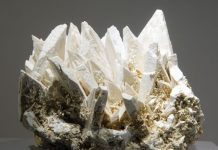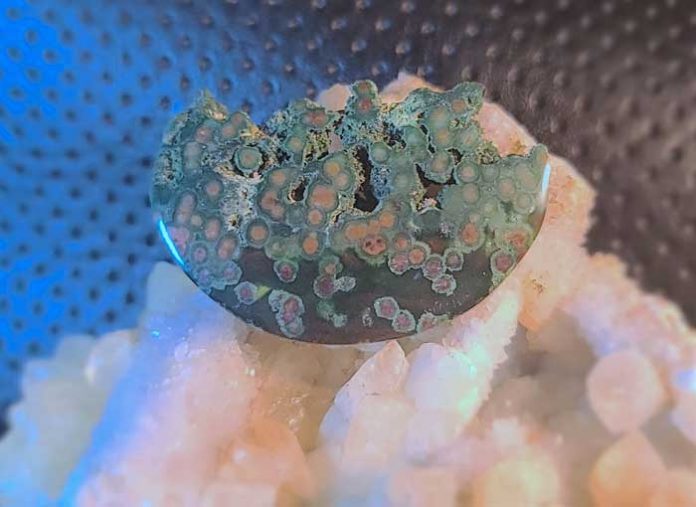
Orbicular bloodstone jasper looks like a cross between fancy jasper and ocean jasper. It is quite appealing with its bright reds, oranges, and greens, not to mention, the orbs.
Since this material is full of color blends and patterns, it creates a natural canvas to use in designing cabochons. My son Ben, for example, likes to utilize the color blends to combine hearts into one cab as if the hearts are blending into one.
Buying Orbicular Bloodstone Jasper
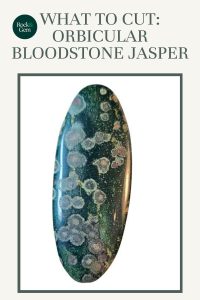
Finding this material is relatively easy. There are several sellers on Facebook — in the Slab Depot group, and on eBay.
When buying rough, you can usually see all the colors from the outside, which helps in deciding whether it has the sought-after colors. One thing to note, this material is a rather hard jasper and tends to have a few fractures. Usually, when I know rough may contain fractures, I tend to buy smaller-sized chunks instead of large pieces. I do this just in case the section I purchase contains many hidden fractures that I’ll have to work around during the cabbing process.
This variation of bloodstone might be a material that is best to purchase in pre-cut slabs so that you can see the full pattern and color array immediately.
How to Slab Orbicular Bloodstone Jasper
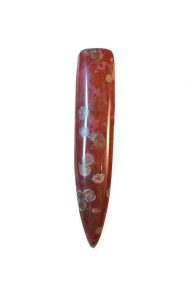 When slabbing this material, there is no right or wrong way to load the vice. One method is to study the color patterns and try and cut in the direction you feel will best yield the desired patterns. If the piece is large enough, another option is to cut down the center and evaluate the pattern and then load the halves into the saw again, in a different direction. Either way, your study of the patterns and colors will help you bring out the best in each piece.
When slabbing this material, there is no right or wrong way to load the vice. One method is to study the color patterns and try and cut in the direction you feel will best yield the desired patterns. If the piece is large enough, another option is to cut down the center and evaluate the pattern and then load the halves into the saw again, in a different direction. Either way, your study of the patterns and colors will help you bring out the best in each piece.
Another helpful technique when working with bloodstone is to bench test each piece by tapping slightly on a table or workbench and listening for fractures. If it’s solid, draw up templates and trim them out.
As you move into the next phase of cabbing, you’ll find the material is standard to most jaspers. However, because of the hardness and highly silicated composition, it is a jasper that tends to chip easily, especially on the bottom edge of the courser grit wheels. It’s best to trim out preforms just a little larger and then grind away excess on a smoother grit wheel, to avoid chipping.
Finishing Up
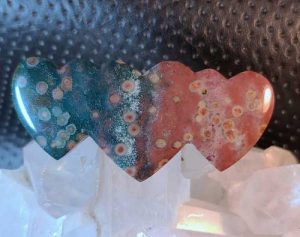 As they say, patience is a virtue, and you’ll need a lot of it as you work with this material, because it can be incredibly challenging to remove all of the scratches by the 280 grit stage.
As they say, patience is a virtue, and you’ll need a lot of it as you work with this material, because it can be incredibly challenging to remove all of the scratches by the 280 grit stage.
At the point where there are no scratches left, or there is no way they will be removed with the remaining wheels, proceed with your routine and polishing stages. By the time you reach the 14k grit wheel, it should have a fantastic mirror polish. To enhance the shine, you can use either cerium oxide on a leather buff or buff with a small amount of Zam compound.
This story about orbicular bloodstone jasper previously appeared in Rock & Gem magazine. Click here to subscribe. Story by Russ Kaniuth.




